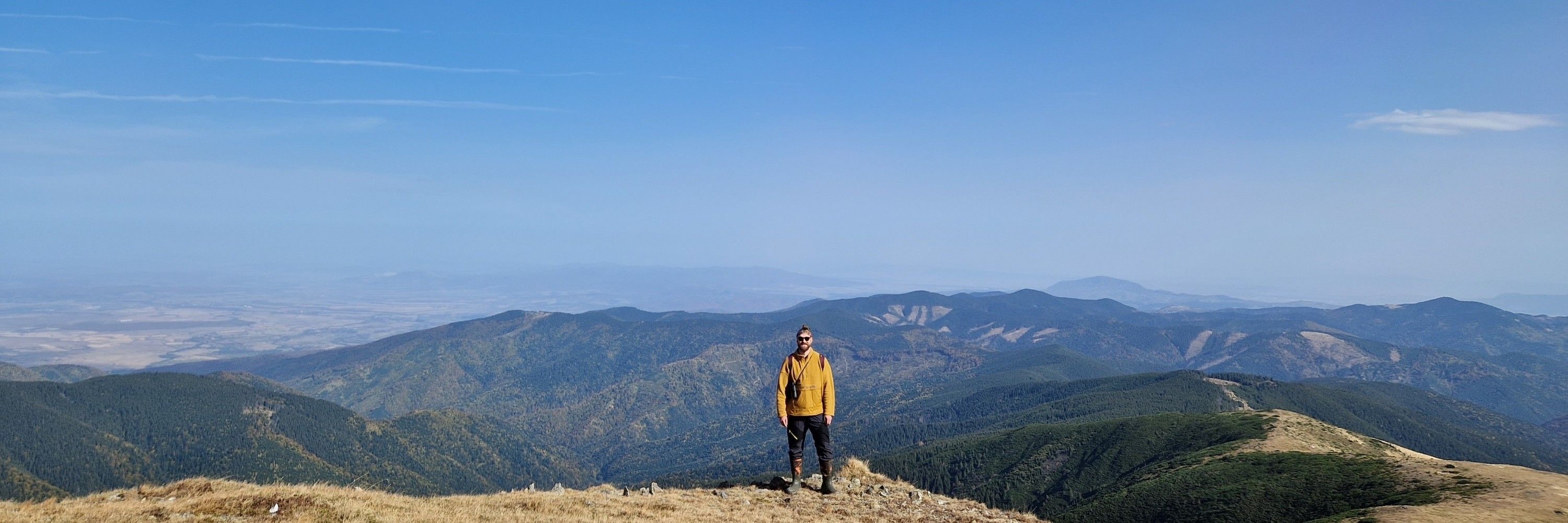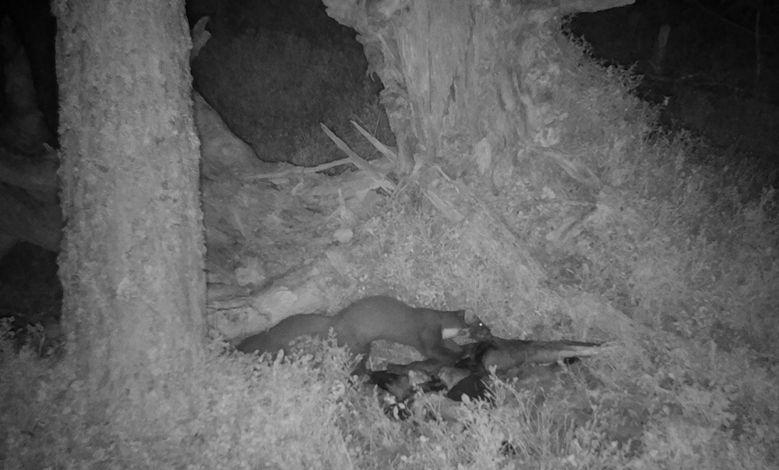
Jack Bamber
@jackantbam.bsky.social
Ecology, PhD Candidate Univeristy of Aberdeen.
These positive results provide clear evidence that diversionary feeding is an effective tool to reduce the impact of predation on cappercaillie productivity.
Many land managers across the current cappercaillie range in Scotland are now deploying diversionary feeding for predator management.
Many land managers across the current cappercaillie range in Scotland are now deploying diversionary feeding for predator management.

August 18, 2025 at 11:42 AM
These positive results provide clear evidence that diversionary feeding is an effective tool to reduce the impact of predation on cappercaillie productivity.
Many land managers across the current cappercaillie range in Scotland are now deploying diversionary feeding for predator management.
Many land managers across the current cappercaillie range in Scotland are now deploying diversionary feeding for predator management.
To assess if the results of this artificial nest study translated to real cappercaillie broods, we trialled novel non-invasive monitoring via camera traps. We were able to identify if a hen had a brood and count how many chicks she had in her brood.

August 18, 2025 at 11:42 AM
To assess if the results of this artificial nest study translated to real cappercaillie broods, we trialled novel non-invasive monitoring via camera traps. We were able to identify if a hen had a brood and count how many chicks she had in her brood.
Check out my bluesky talk for #BOUatEOU.
We found that diversionary feeding is a suitable impact based tool to reduce conflicts between recovering predators (pine marten) and endangered ground nesting birds (cappercaillie) in Scottish Forests.
🧪🌍🦤🍁
We found that diversionary feeding is a suitable impact based tool to reduce conflicts between recovering predators (pine marten) and endangered ground nesting birds (cappercaillie) in Scottish Forests.
🧪🌍🦤🍁

August 18, 2025 at 11:42 AM
Check out my bluesky talk for #BOUatEOU.
We found that diversionary feeding is a suitable impact based tool to reduce conflicts between recovering predators (pine marten) and endangered ground nesting birds (cappercaillie) in Scottish Forests.
🧪🌍🦤🍁
We found that diversionary feeding is a suitable impact based tool to reduce conflicts between recovering predators (pine marten) and endangered ground nesting birds (cappercaillie) in Scottish Forests.
🧪🌍🦤🍁
🚨 New publication 📝
Out today in the royal society proceedings B. We find that diversionary feeding boosts productivity of cappercaille from 0.82 to 1.90. Indicating that this impact based method can effectively reduce the influence of predation.
Read all about it here: shorturl.at/QRb76
Out today in the royal society proceedings B. We find that diversionary feeding boosts productivity of cappercaille from 0.82 to 1.90. Indicating that this impact based method can effectively reduce the influence of predation.
Read all about it here: shorturl.at/QRb76

June 25, 2025 at 1:10 PM
🚨 New publication 📝
Out today in the royal society proceedings B. We find that diversionary feeding boosts productivity of cappercaille from 0.82 to 1.90. Indicating that this impact based method can effectively reduce the influence of predation.
Read all about it here: shorturl.at/QRb76
Out today in the royal society proceedings B. We find that diversionary feeding boosts productivity of cappercaille from 0.82 to 1.90. Indicating that this impact based method can effectively reduce the influence of predation.
Read all about it here: shorturl.at/QRb76
TAKE HOME: We argue, using several strands of evidence, that diversionary feeding is a credible alternative to lethal control of predators and shows promising signs of reversing the decline of the capercaillie in Scotland.
Read the full paper here: www.biorxiv.org/content/10.1... 7/7
Read the full paper here: www.biorxiv.org/content/10.1... 7/7
December 14, 2024 at 4:43 PM
TAKE HOME: We argue, using several strands of evidence, that diversionary feeding is a credible alternative to lethal control of predators and shows promising signs of reversing the decline of the capercaillie in Scotland.
Read the full paper here: www.biorxiv.org/content/10.1... 7/7
Read the full paper here: www.biorxiv.org/content/10.1... 7/7
RESULT: Diversionary feeding increased the number of hens detected with chicks, consistent with our previous work showing a decrease in nest failure. This resulted in productivity (the expected chicks per hen) increasing from 0.82 in unfed sites to 1.9 in fed sites (more than double!). 6/7

December 14, 2024 at 4:43 PM
RESULT: Diversionary feeding increased the number of hens detected with chicks, consistent with our previous work showing a decrease in nest failure. This resulted in productivity (the expected chicks per hen) increasing from 0.82 in unfed sites to 1.9 in fed sites (more than double!). 6/7
HYPOTHESIS: Using a 3-year landscape-scale control-treatment experiment, we predicted that the chicks per hen differed between sites that deployed diversionary feeding and sites that did. 5/7

December 14, 2024 at 4:43 PM
HYPOTHESIS: Using a 3-year landscape-scale control-treatment experiment, we predicted that the chicks per hen differed between sites that deployed diversionary feeding and sites that did. 5/7
METHOD: We used #cameratraps on dust baths, natural features used by capercaillie, to detect capercaillie hens and determine whether they had chicks or didn’t have chicks. We used #AI from conservation ai to detect and count hens and broods. 4/7

December 14, 2024 at 4:43 PM
METHOD: We used #cameratraps on dust baths, natural features used by capercaillie, to detect capercaillie hens and determine whether they had chicks or didn’t have chicks. We used #AI from conservation ai to detect and count hens and broods. 4/7
BACKGROUND: Previously, we found that DF reduced artificial nest depredation, resulting in an 83% increase in nest survival. The big question though was whether this would translate to real birds. 3/7

December 14, 2024 at 4:43 PM
BACKGROUND: Previously, we found that DF reduced artificial nest depredation, resulting in an 83% increase in nest survival. The big question though was whether this would translate to real birds. 3/7
⏰New Research ⏰
We quantified the direct impact of diversionary feeding on capercaillie productivity. We show an increase in the proportion of hen with a brood in DF sites (37% -> 85%) and, as a result, a 131% increase in chicks per hen. Read more here: www.researchgate.net/publication/...
1/7
We quantified the direct impact of diversionary feeding on capercaillie productivity. We show an increase in the proportion of hen with a brood in DF sites (37% -> 85%) and, as a result, a 131% increase in chicks per hen. Read more here: www.researchgate.net/publication/...
1/7

December 14, 2024 at 4:43 PM
⏰New Research ⏰
We quantified the direct impact of diversionary feeding on capercaillie productivity. We show an increase in the proportion of hen with a brood in DF sites (37% -> 85%) and, as a result, a 131% increase in chicks per hen. Read more here: www.researchgate.net/publication/...
1/7
We quantified the direct impact of diversionary feeding on capercaillie productivity. We show an increase in the proportion of hen with a brood in DF sites (37% -> 85%) and, as a result, a 131% increase in chicks per hen. Read more here: www.researchgate.net/publication/...
1/7

